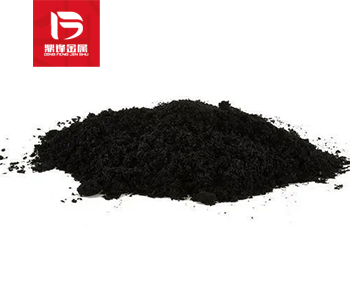
Rhodium Carbon Recycling
Rhodium-on-carbon refers to a composite material formed by combining rhodium metal with activated carbon, which is usually used for catalytic and adsorption applications. As a precious metal, rhodium has excellent catalytic activity and high temperature resistance, while activated carbon has good surface adsorption and large specific surface area. Deactivated rhodium carbon catalyst is one of the recovery sources of rhodium-containing precious metal catalysts. Other types of rhodium-containing precious metal catalysts include rhodium oxide recovery, rhodium acetate recovery, rhodium iodide recovery, rhodium octanoate recovery, and rhodium sulfate recovery.
- Parameter
- Related Questions and Answers
-
Name : Rhodium Carbon
-
Use : Industrial Catalysts
-
Application Areas : Catalyst Field
-
Appearance and properties : Black
-
Settlement Method : On-site payment
-
Recycling Type : Rhodium recycling
-
Door-to-door recycling:worldwide
-
Customer service: Free content testing and door-to-door recycling
Rhodium Target Recycling
Rhodium target is a rhodium metal material used in material processing processes such as thin film deposition and magnetron sputtering. It is usually processed into high purity rhodium metal and used for surface coating of high-tech products such as electronics, optical films, solar cells, etc. Sputtering rhodium target recycling is one of the sources of precious metal target recycling. Precious metal target recycling also includes gold target recycling, ruthenium target recycling, iridium target recycling, platinum target recycling, indium target recycling, etc.
Search : Rhodium Target RecyclingRhodium Slag Recycling
Rhodium slag is a by-product produced from the rhodium metal refining process and typically contains oxides or compounds of rhodium and other precious metals (such as platinum, palladium, and gold). Rhodium slag is typically the solid material remaining after rhodium metal has been separated from rhodium ores or rhodium alloys by chemical reactions during high-temperature smelting, acid leaching, or other refining processes. Recycling of rhodium slag is one method of recycling rhodium-containing waste. Recycling of rhodium-containing waste also includes rhodium powder recycling, rhodium target material recycling, rhodium particle recycling, rhodium skin recycling, rhodium water recycling, and rhodium gold recycling.
Search : Rhodium Slag RecyclingRhodium Nitrate Recycling
Rhodium nitrate (Rh(NO₃)₃) is an inorganic compound of rhodium, usually existing in the form of red or purple crystals. It is the nitrate salt of rhodium and is often used in the manufacture of catalysts. Waste rhodium nitrate is a recyclable rhodium-containing precious metal catalyst waste. Recycling of rhodium-containing precious metal catalyst waste also includes rhodium chloride recycling, rhodium oxide recycling, rhodium acetate recycling, rhodium resin recycling, rhodium iodide recycling, and rhodium carbon catalyst recycling.
Search : Rhodium Nitrate RecyclingRhodium Slurry Recycling
Rhodium slurry is a suspension containing rhodium particles or rhodium catalyst, usually consisting of rhodium metal or a rhodium compound (e.g. rhodium chloride or rhodium oxide) mixed with a suitable solvent or carrier (e.g. water or organic solvent). Waste rhodium slurry is one method of recycling rhodium-containing waste. Recycling of rhodium-containing waste also includes recovery of rhodium water, recovery of rhodium slag, recovery of rhodium carbon, recovery of rhodium powder, recovery of rhodium film and recovery of rhodium gold.
Search : Rhodium Slurry RecyclingProduct Details
Rhodium-on-carbon refers to a composite material formed by combining rhodium metal and activated carbon, which is usually used for catalytic and adsorption applications. As a precious metal, rhodium has excellent catalytic activity and high temperature resistance, while activated carbon has the characteristics of good surface adsorption and large specific surface area. When rhodium metal is supported on the surface of activated carbon in the form of fine particles, the rhodium-carbon composite material can combine the advantages of both, and is widely used in catalytic reactions, especially in industrial catalytic processes such as hydrogenation, oxidation, and gas purification. Carbon-supported rhodium can support and stabilize metal catalysts, so it can also be used for catalyst recovery and regeneration, improving the efficiency and life of catalytic reactions.
Typical rhodium-carbon loading rates are usually in the following range:
1. Low loading (rhodium content about 1%): This rhodium-to-carbon ratio is often used in applications that require lower catalytic activity or higher adsorption performance. For example, it is used in gas purification, small-scale catalytic reactions, or some fine chemical processes. Low-loading rhodium-loaded carbon has a high specific surface area, so it requires less rhodium metal to achieve sufficient catalytic effect.
2. Medium loading (rhodium content about 5% to 10%): This ratio of rhodium to carbon is suitable for most traditional catalytic reactions, such as hydrogenation and oxidation reactions. Medium loading provides excellent catalytic activity while maintaining reasonable cost-effectiveness, and is widely used in petrochemical, automotive catalysis and other fields.
3. High loading (rhodium content about 20% to 30% or more): High-loading rhodium carbon is mainly used in applications that require high catalytic efficiency and high reaction activity, especially in high-demand chemical reactions, such as large-scale industrial catalysis and fine chemical manufacturing. A high content of rhodium on carbon provides strong catalytic activity, but also increases costs and reduces the specific surface area.
Deactivated rhodium carbon catalyst is one of the sources of recovery of rhodium-containing precious metal catalysts. Other types of rhodium-containing precious metal catalysts include rhodium oxide recovery, rhodium acetate recovery, rhodium iodide recovery, rhodium octanoate recovery, and rhodium sulfate recovery. If you need to recycle rhodium-containing waste, please call our 24-hour service hotline. Ding Feng precious metal recycling and refining manufacturer has its own recycling and refining plant without any middleman to make profits from price differences, and has a professional technical team and customer service staff to provide one-to-one service and ensure customer privacy during the recycling process.

